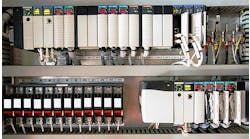The well-rounded industrial PC (IPC) comes in many sizes and configurations that can handle extreme industrial environments. However, its versatility when it comes to control capabilities, performing the work of multiple controllers, is where it really shines.
Many of these IPC are easily customizable for a variety of applications and functions. Unfortunately, customization can and does cause hardware-configuration, operating-system and software-driver issues, but there are IPCs out there with tight revision control, which can eliminate these issues. Some are designed to be controllers first and foremost. Regardless of the type of IPC selected, expect high performance in the controller.
From an extreme industrial environment standpoint, most IPCs enjoy the claims of ruggedness to handle temperature, shock and vibration. Many also tout dustproof or waterproof housings for ingress protection. Some also offer fanless, passive cooling that, by design, minimizes the heat produced and the energy used.
Defining the environment the IPC will operate in and where it will be installed are important. The often expandable 19-inch rack-mount IPCs come in many form factors. Some are compact and narrow, and some are tall to handle many full-size expansion cards, but they are most often at home in expensive rack-mount cabinets. Wall-mount and box PCs are other form factors to consider where a smaller-footprint solution is needed. While still offering some expansion, they can be easier to mount inside a control enclosure. Panel PCs, with a combined display and PC, can be very compact devices or part of a large, multi-touch screen with IP65 protection, suitable for use in harsh environments. Other PC-based control systems are physically and functionally configured similar to a programmable logic controller’s form and function. This wide selection of IPC form factor from vendors demands that installation goals be understood.
The application and functions the IPC will be controlling, monitoring, analyzing and collecting also drives IPC selection. Fortunately, availability of high-performance processors and memory, expansion slots, built-in networking, onboard USB and serial and graphical display ports makes the customization somewhat unlimited.
Add to that the IPC's compatibility with nearly any peripheral used in an industrial setting and even a poorly specified IPC can have good performance. However, do it right by looking closely at the industrial-automation application it will be used in.
These IPCs are high performance and have multi-core processors. Concurrently, they can control motion and machine sequence while analyzing vision-system inspection data and displaying the results graphically on a display. For machine control, an IPC can perform multi-axis motion and robot control while coordinating this motion with other automatic sequences and part tracking. At the same time it can provide quality-control capabilities by providing vision-system controller functionality for measurement, inspection, presence verification and flaw detection.
Many industrial vendors have recognized that the IPC can provide a complete solution. It's not just an industrial-strength desktop PC; it's a device that can combine machine or process control, motion control and visualization into a single hardware platform. And the IPC can be an embedded processor or a full-blown, high-performance PC, depending on architecture.
The IPC's product range and expansion flexibility are important traits in machine automation, and what is turning into an all-in-one solution provides many options for the control designer. The hardware and software can be adapted as needed for a cost-effective solution. This includes processor power, system memory, communication methods, operating systems, programming languages, expandability and form factor.
The multi-core processors and open architecture of the IPC are also desirable. The multi-core design is currently being used for high-level control and lower-priority monitoring functions. Each function is being run on separate processor cores to meet real-time system performance needs. The open system allows for a stable, real-time operating system to be run on the same processor that is running Windows, for example.
The IPC also works great in data collection applications, often acting as a data concentrator. With its expandability and open architecture, it's also a great platform for test systems, capable of collecting tens of thousands of analog and digital signals a second. This high-speed data can be stored and analyzed as well by the IPC and pushed to the cloud.
While the capabilities of programmable logic controllers (PLCs) and programmable automation controllers (PACs) are well on their way to merging with those of IPCs, the IPC still has advantages in processing power and communication options. The industrial Ethernet, fieldbus and USB and serial ports on the typical IPC provides the connection and communication protocols for just about any control or monitoring industrial application.
Regardless of the existing or future planned system architecture, the IPC will make the connection. Connections to barcode readers, ID readers, RFIDs and even biometric readers are common today. Ease of integration of legacy devices and protocols to the IPC, as well as the Internet of Things and the cloud, is also common.
The combination of an IPC's adaptability with its advanced control, motion control and visualization abilities, all in a single controller, simplifies design, integration and programming. What used to be done in multiple controllers is now done in a single controller, with a high level of performance and functionality. The IPC is enabling a control designer to use a single controller as the system solution. The hardware manufacturers are taking note, and the PLC and PAC systems will soon follow with more all-in-one control system solutions.






